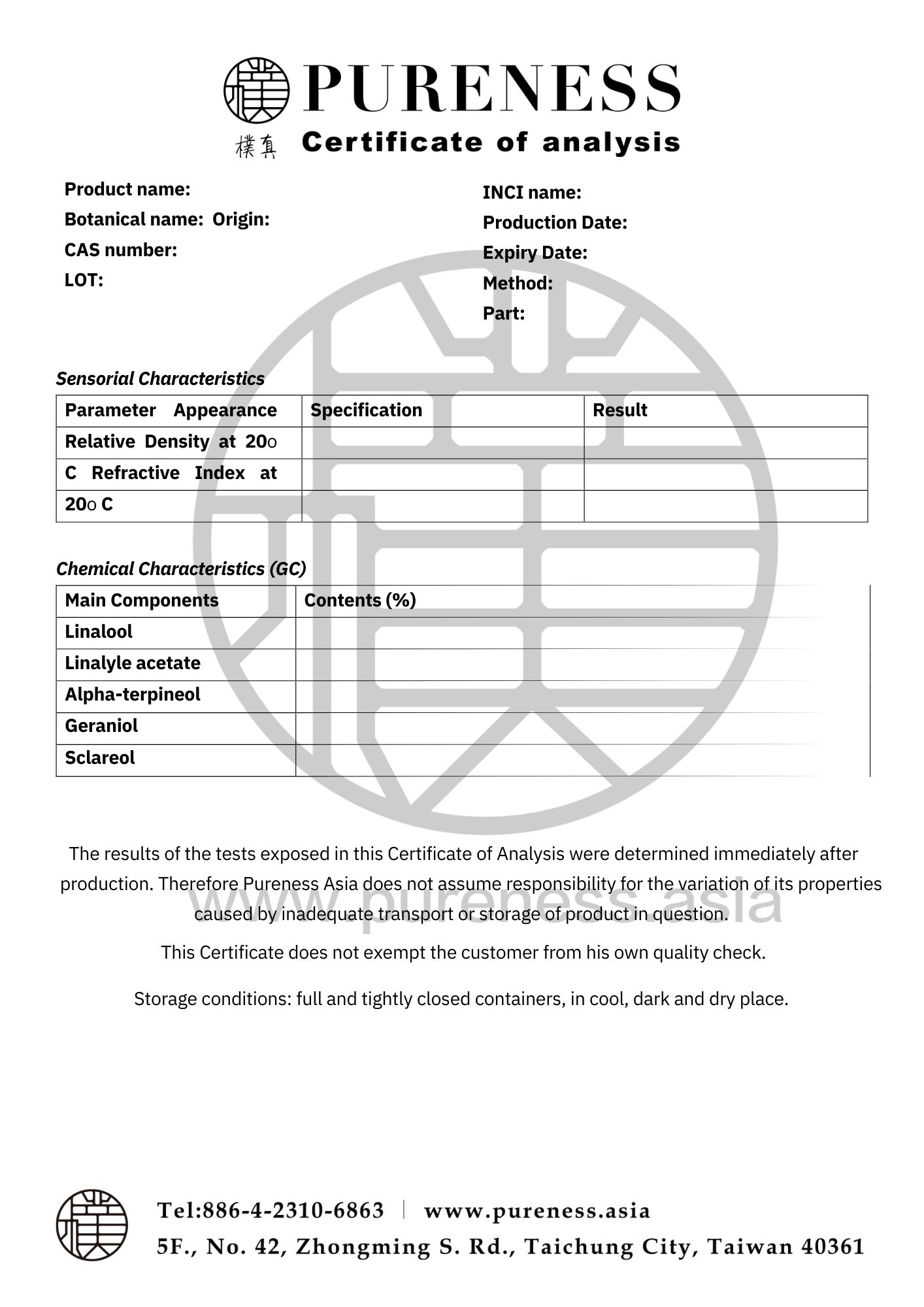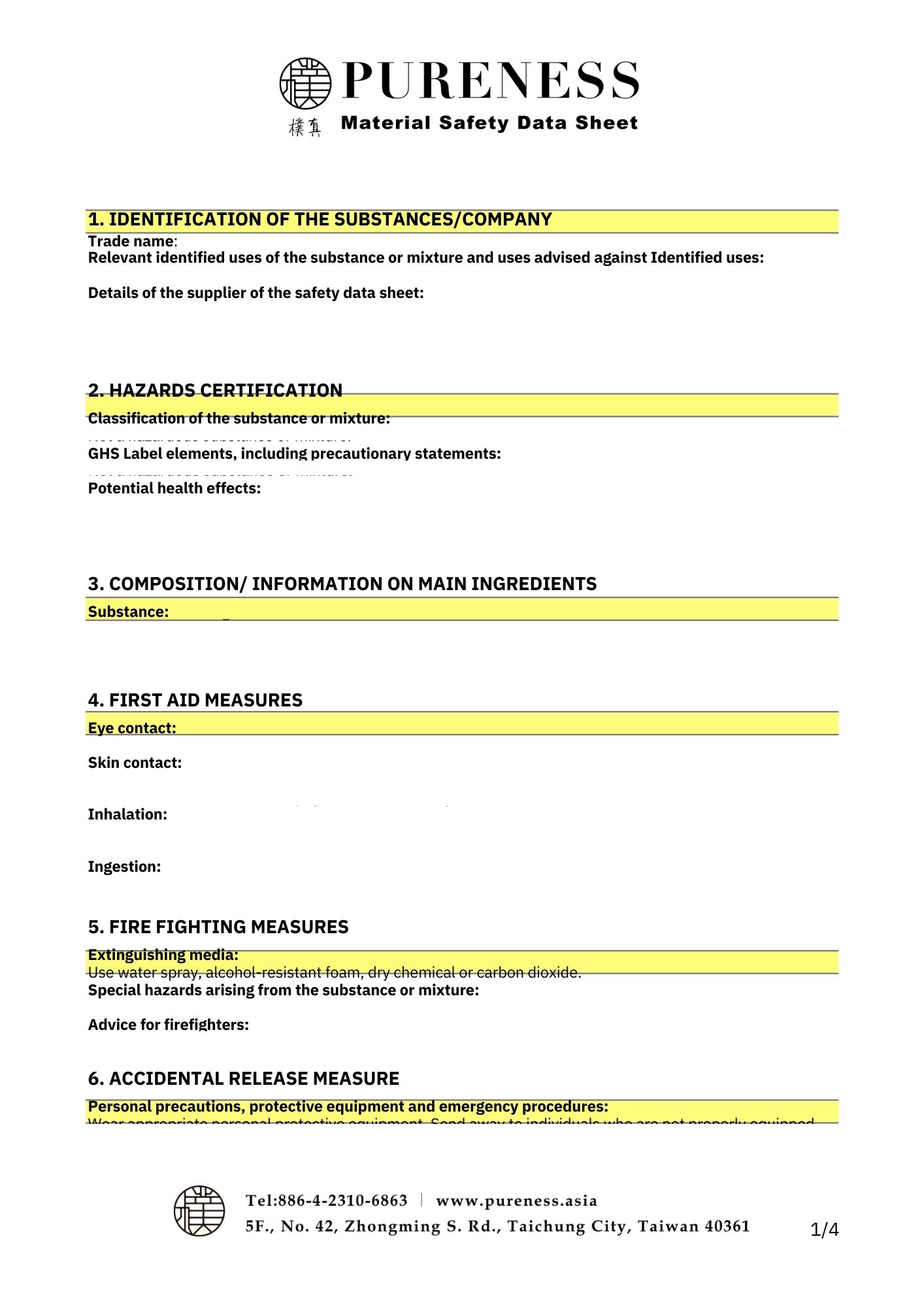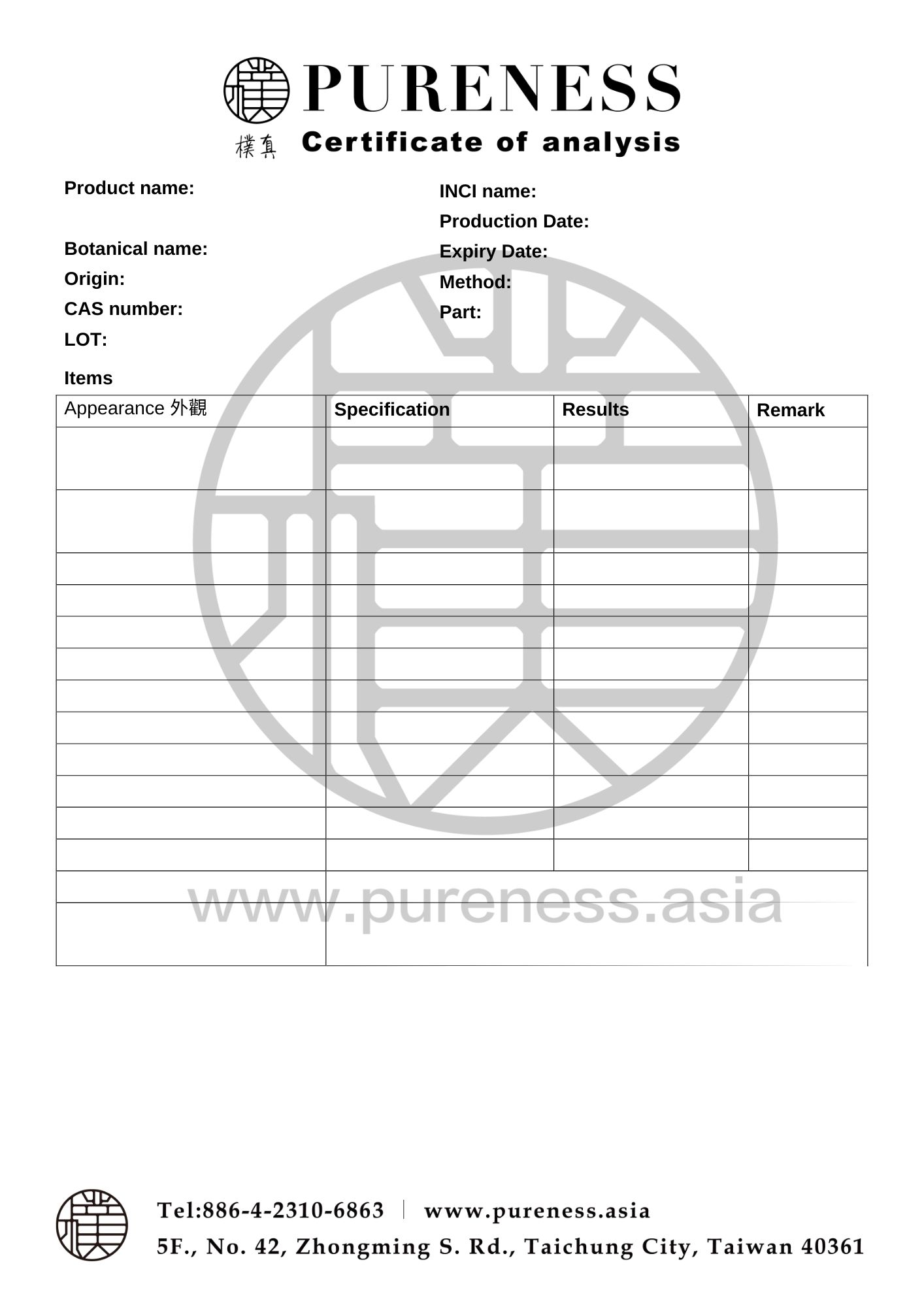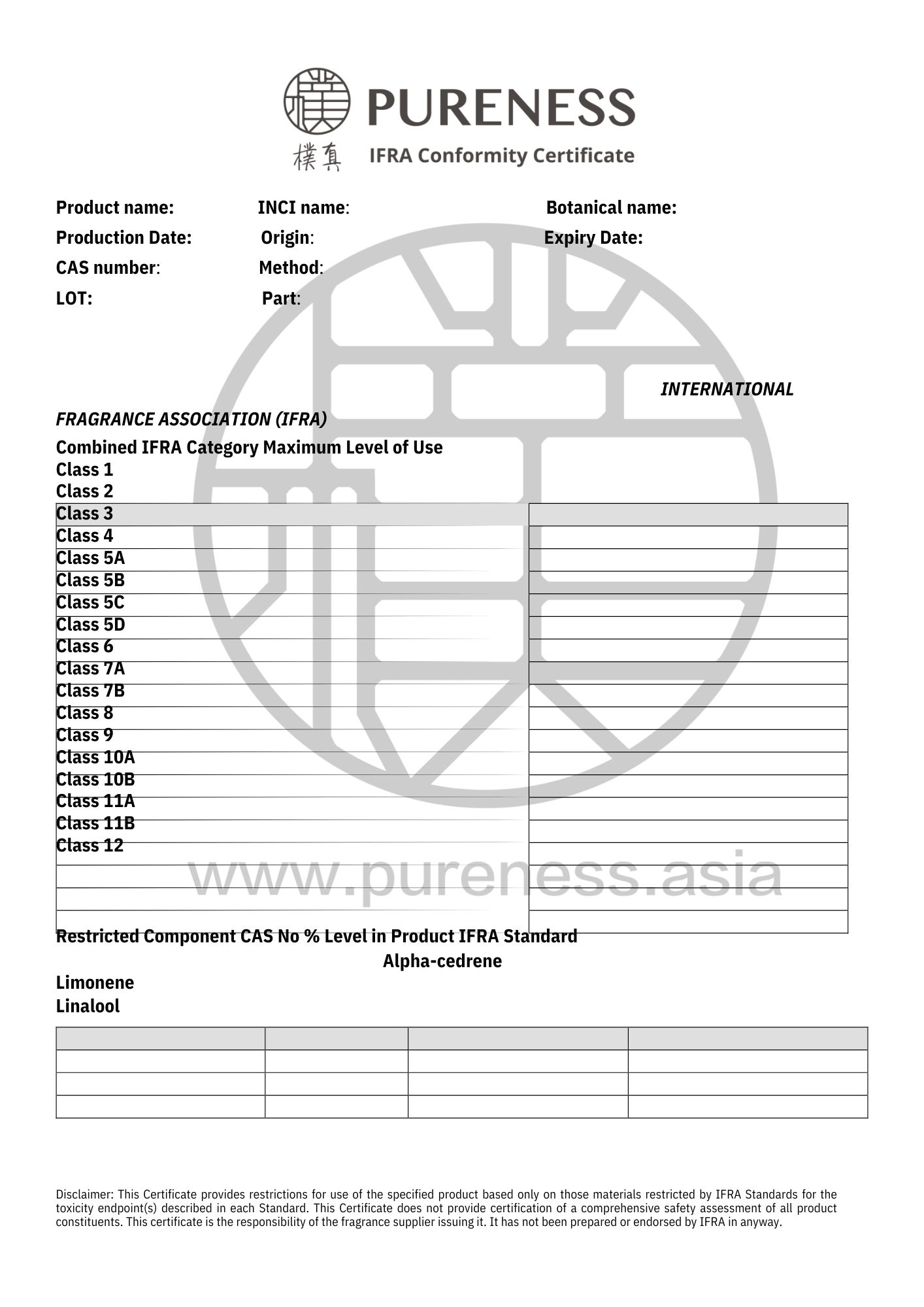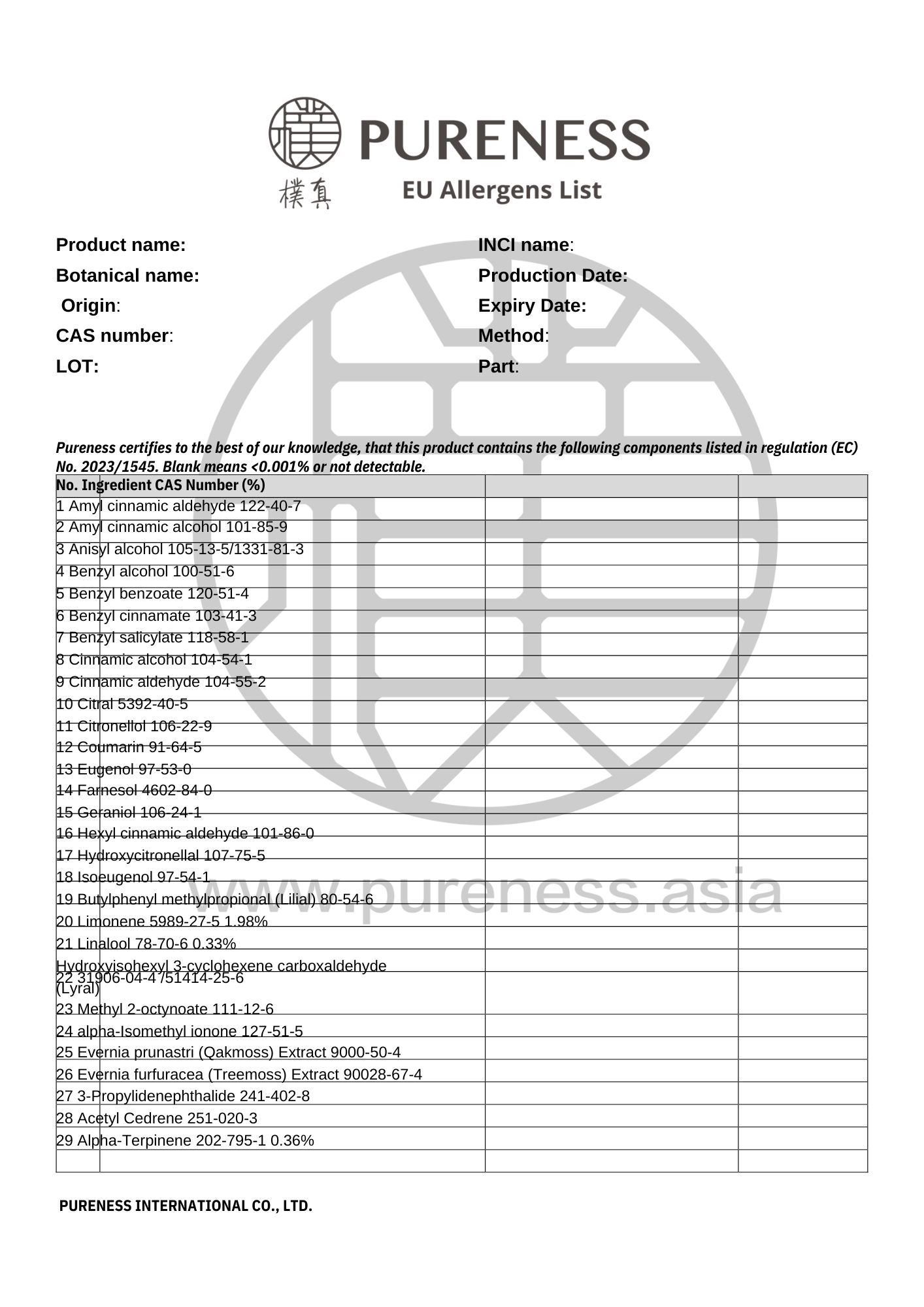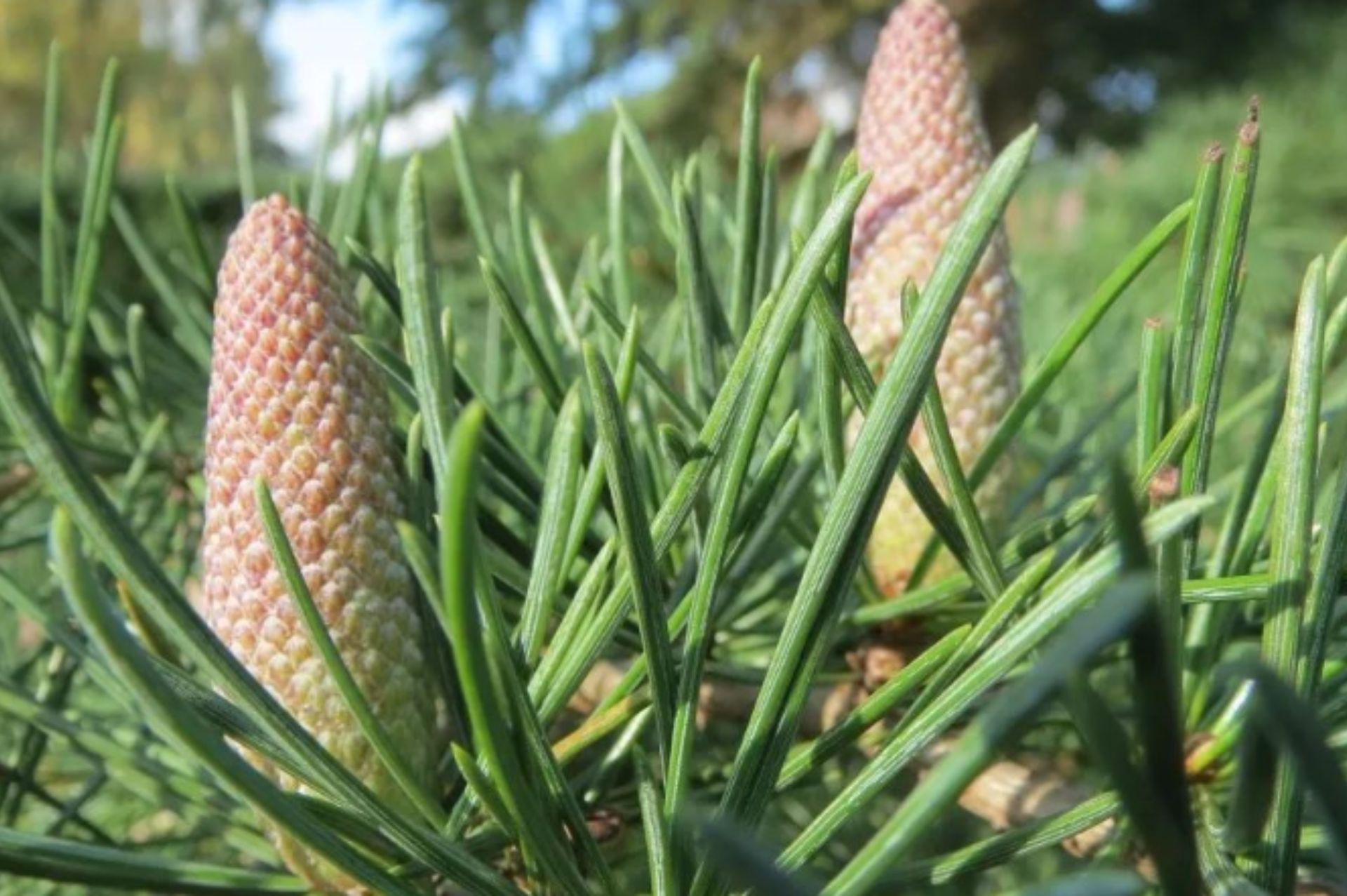
Cedarwood (Himalayan)
Scientific name|Cedrus deodara
Origin|India
Classification|Wood series
Specifications|500g-25kg Please contact sales for details
Extraction part|Wood/conifer
Extraction method | Distillation
Plant family|Pinaceae
Aroma|Woody aroma, resembling sandalwood but drier in character
▎Essential Oil Introduction
Cedarwood Himalayan, also known as Deodar Cedar, thrives in the cold regions of the Himalayas, particularly in India, Nepal, and Tibet. It can grow to an impressive height of 40-50 meters and reach up to 3 meters in diameter. Due to its high resin content, the wood can spontaneously combust under intense sunlight, as the natural oils within ignite, embodying the richness of nature.
The tree is known for its drooping branches, in contrast to the upward-arching branches of Cedarwood Atlas. The branches and leaves of Cedarwood Himalayan appear more chaotic and wild, a feature likened by Indians to the dancing figure of Lord Shiva. This association has earned it the title of "Sacred Tree" and a divine symbol in Indian culture. The species name deodara comes from the Sanskrit word diva, meaning "divine tree," and it is also the national tree of Pakistan.
Cedarwood Himalayan essential oil is often used during meditation, as it aids in calming the mind and eliminating unnecessary distractions, promoting inner peace.
▎Component Analysis
|Main component: Sesquiterpenes
The main components of Cedarwood Himalayan essential oil are α- and γ-atlantone, α- and β-himachalene, and himachalol.
Its richness in sesquiterpenes (especially himachalene) provides excellent soothing and calming effects, while sesquiterpene ketones (like atlantone) act as "healing masters," helping to resolve and repair deep emotional wounds and restore inner tranquility. Cedarwood Himalayan contains a notably high level of sesquiterpene ketones among cedars, making it an excellent oil for clearing blockages.
The essential oil extracted from the needles of Cedarwood Himalayan is primarily composed of monoterpenes, giving it a different scent from the wood. It is often double-distilled in the market, resulting in a clearer oil with less α-atlantone content.
|Research Validation
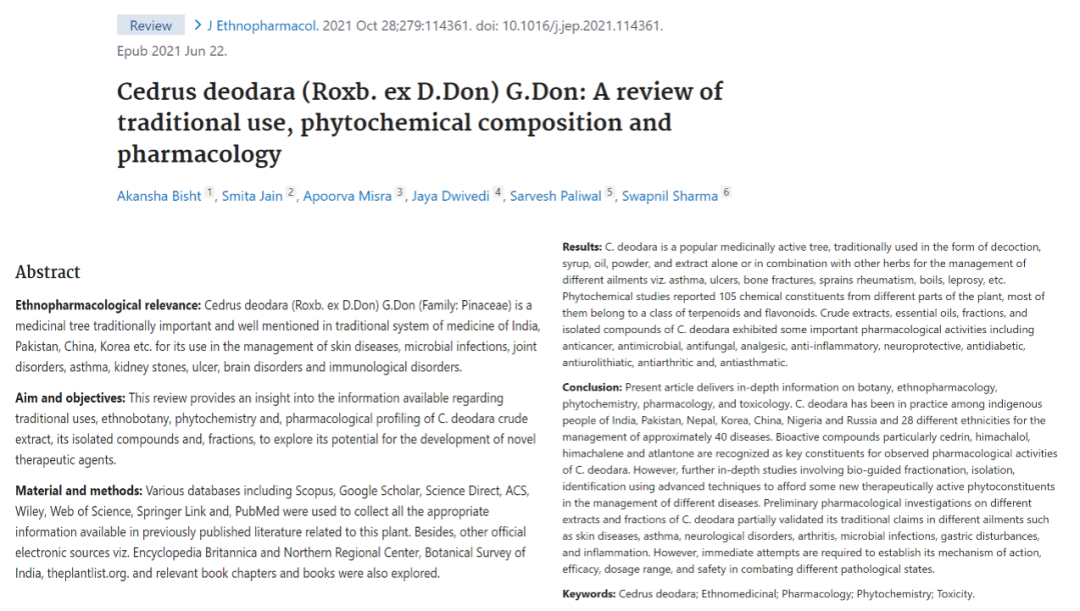
▸ Research on the phytochemical active components of Cedarwood Himalayan has shown some significant pharmacological activities.
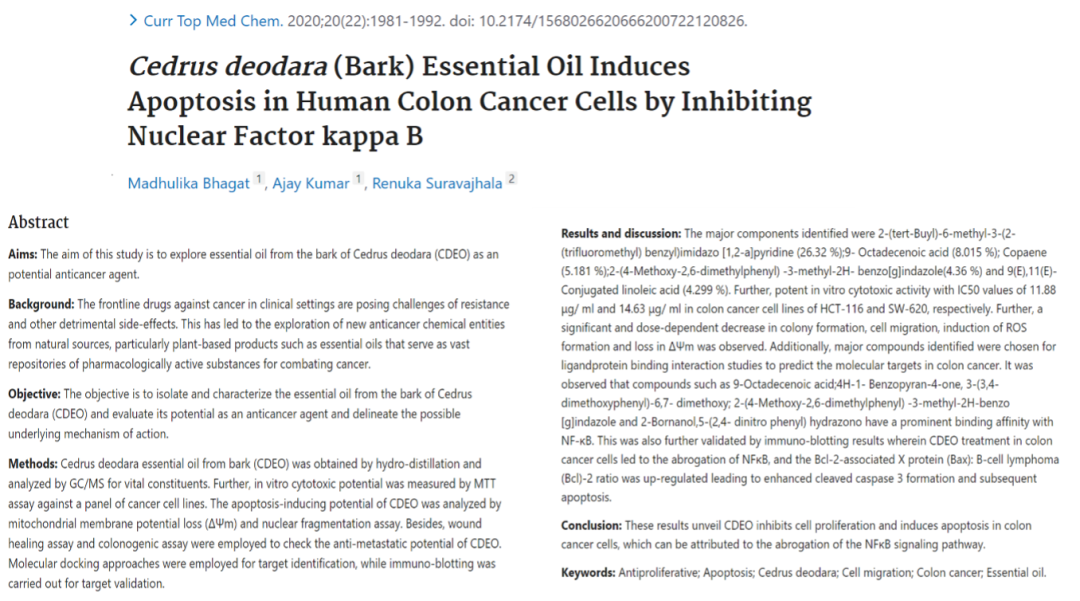
▸ Studies have been conducted on Cedarwood Himalayan essential oil regarding its role in inhibiting NF-kappa B and inducing apoptosis in colon cancer cells.
|Raw Material Certifications
To obtain relevant certification information, please contact us on WhatsApp.
▎References
- Bisht A, et al. Cedrus deodara (Roxb. ex D.Don) G.Don: A review of traditional use, phytochemical composition and pharmacology. J Ethnopharmacol. 2021. Oct 28;279:114361.
- Bharti R, et al. Benzosuberene-sulfone analogues synthesis from Cedrus deodara oil and their therapeutic evaluation by computational analysis to treat type 2 diabetes. Bioorg Chem. 2021. Jul;
- Xu QD, et al. Effect of Cedrus deodara extract on the physiochemical and sensory properties of salted meat and its action mechanism. J Food Sci. 2021. Jul;86(7):2910-2923.
- Bhagat M, et al. Cedrus deodara (Bark) Essential Oil Induces Apoptosis in Human Colon Cancer Cells by Inhibiting Nuclear Factor kappa B. Curr Top Med Chem. 2020. ;20(22):1981-1992.
- Jamil HMA, et al. Identification and inoculation of fungal strains from Cedrus deodara rhizosphere involve in growth and alleviation of high nitrogen stress. Saudi J Biol Sci. 2020. Jan;27(1):524-534.
- Zhang Z, et al. Utilization of the extract of Cedrus deodara (Roxb. ex D.Don) G. Don against the biofilm formation and the expression of virulence genes of cariogenic bacterium Streptococcus mutans. J Ethnarma. 257:112856
- Buneri ID, et al. A comparative toxic effect of Cedrus deodara oil on larval protein contents and its behavioral effect on larvae of mealworm beetle (Tenebrio molitor) (Coleoptera: Tenebrionidae)。 2):281-285.
- Narayan S, et al. Cedrus deodara: In vitro antileishmanial efficacy & immumomodulatory activity. Indian J Med Res. 2017. Dec;146(6):780-787.
- Itoo ZA, et al. Ectomycorrhizal diversity associated with Cedrus deodara and Pinus wallichiana in the Kashmir Himalaya, India. Pak J Biol Sci. 2014. Jan 1;17(1):32-40.
- Chaudhary A, et al. Antifungal sesquiterpenes from Cedrus deodara. Planta Med. 2012. Jan;78(2):186-8.
|Some images sourced from the internet. Contact for copyright removal|
